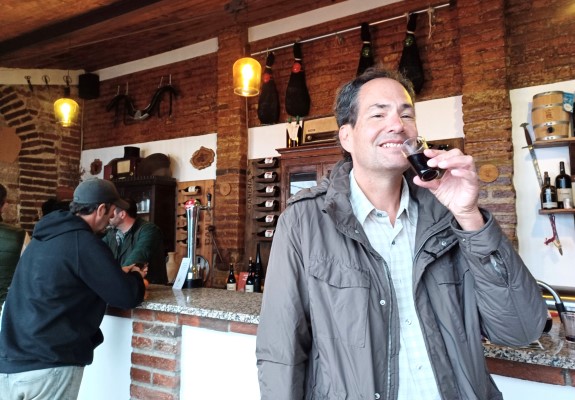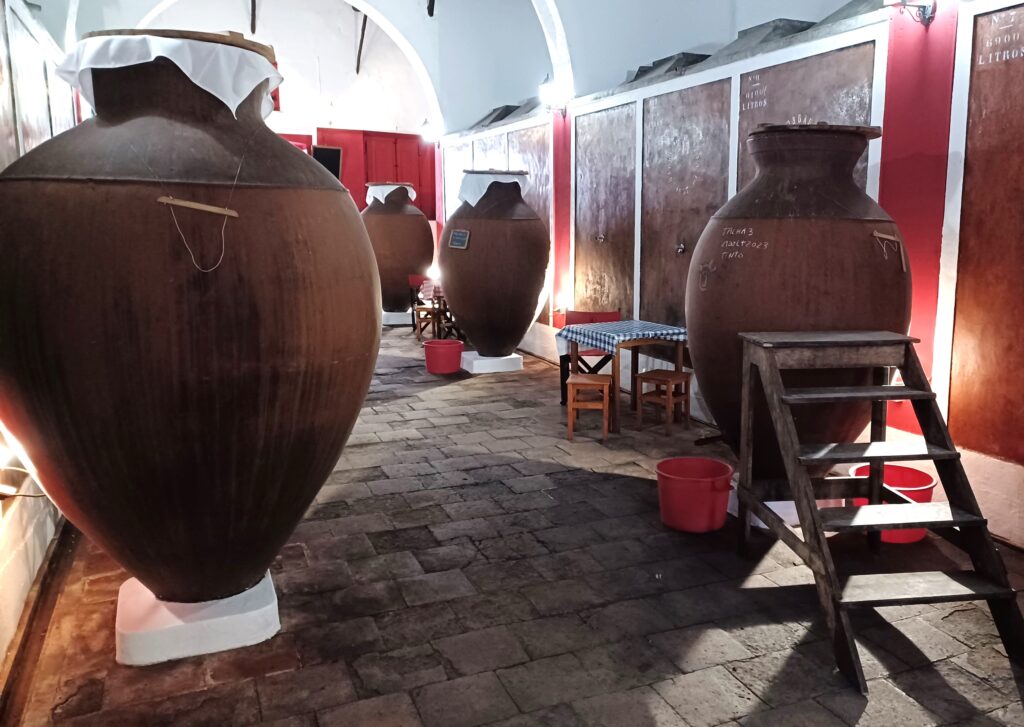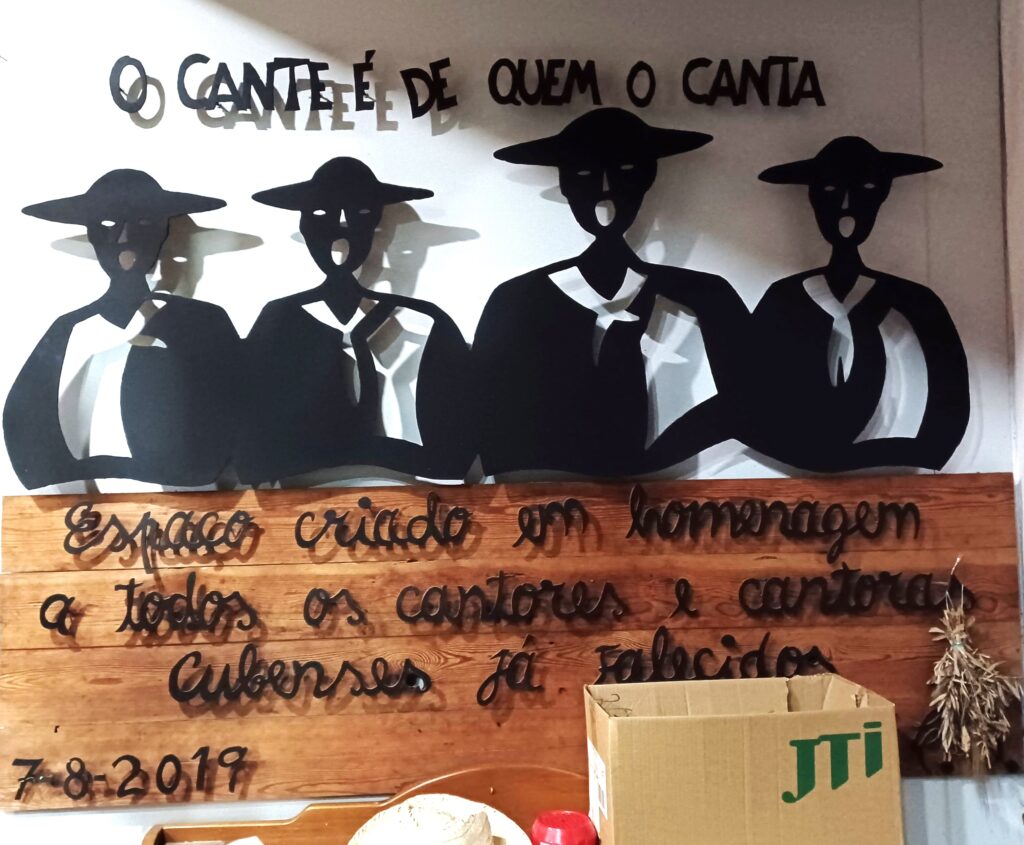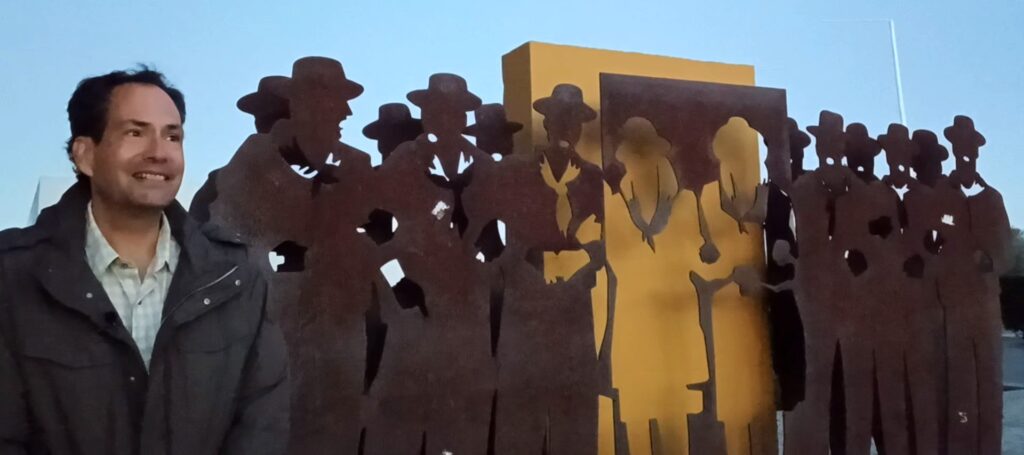While the island nation and this small town in Portugal have little in common, they do have a tenuous link with Christopher Columbus.

Cuba
Cuba is a small town of less than 5,000 people in the Alentejo region. This is a rural, agricultural area where grapes and grains are harvested. Cork is also a big industry.
Wine
Alentejo is the third largest wine producing region in Portugal, after Douro Valley and Lisbon. Here, vineyards often worked under the theory of high quantity, low quality. The bulk juice was sold to other wineries to blend with their own grapes. While that practice still exists, winemaking has made great strides in terms of quality in recent decades. Today, many are world-class.
You can visit a few wineries for a tour or tasting, but this is a rural area and you’ll need a car to get there.
Herdade dos Grous
This winery and 5 star hotel is about 35 minutes from Cuba by car. The property is spectacular with a restaurant and wine tastings daily.
Herdade da Mingorra
Just a few minutes from Herdade dos Grous is Herdade da Mingorra, one of the oldest vineyards in the area. Their reds use international varietals like Cab Sauv, Merlot, and Syrah, but they also use Portuguese grapes like Aragonez, Castelão, and Trincadeira.
Herdade do Vau
This winery features their acclaimed RISO Reserva Red. The wine undergoes an extended maceration period and 16 months of aging in French oak. Schedule a tasting in advance.

But, for me, the best thing is a to visit Adega do Canena right in town. This place ferments their wine in giant clay pots called amphoras. These vats hold 600 liters! This method wine making came to Portugal from the Romans and is still used by Canena today.
When visiting, you can see the amphoras and the wine is served at the bar in little pitchers and adorable little glasses that hold maybe 2 ounces. They also serve petiscos (little plates) of delicious olives, cheese and fruit.
The decor is traditional and the atmosphere can get rather loud. Highly recommended. Just know that you are in rural Portugal. Not everyone speaks English. Have Google Translate handy.

Another great place is Casa de Monte Pedral. The restaurant serves typical Portuguese fare and behind the restaurant is a characteristic bar. Order some wine and it will probably be poured into a little pitcher directly from the huge stainless steel vat where it is stored. You might have to wake up the bartender Maria to get your wine if she falls asleep in her chair watching Portuguese Idol on the TV.
O Cante Alentejano (The Alentejo Singing)

When there’s wine involved, singing is sure to follow. Alentejo is known for it’s traditional folk singing and groups, deemed by UNESCO as a Intangible Cultural Heritage of Humanity in 2014.
O Cante Alentejano is performed by choral groups with formal concerts taking place in traditional costumes. However, most singing is done informally at family gatherings or in bars where everyone knows the songs.

The first O Cante Alentejano group was formed in 1926 by the workers of the nearby São Domingos Mines. Soon, groups sprung up all everywhere. These singing groups often travel to entertain in Portuguese cities and towns all over the country, delighting audiences with their talent and traditional costumes.
In Cuba, there’s a monument to ao Cante Alentejano. There’s also plans for a museum dedicated to this form of folk singing in nearby Serpa.

Columbus
Navigator/Colonialist/Slave Trader Christopher Columbus was born in 1451 in Genoa. However, there are people who believe he was actually of Portuguese descent.
This theory of a Portuguese Columbus dates to 1916 and says that Columbus was born in Cuba, Portugal and his real name was Salvador Fernandes Zarco. There have been books and academic papers written about this so-called Portuguese Columbus, the most recent being by Professor João Paulo Oliveira e Costa, the Chair of the Department of History at NOVA University Lisbon in 2023. Prof. Costa says it is impossible that Columbus was Genovese.
They point to a court document in which Columbus indicates his nationality as Portuguese and another where he refers to Portugal as “my homeland.” Most of this evidence has been dismissed by researchers and scholars.

But, it should be noted that Columbus was based in Lisbon from 1477 to 1485 and married a Portuguese woman of noble descent. In fact, had the sea route to the Far East via Africa’s Cape of Good Hope not been navigated by Portuguese sailor Bartolomeu Dias already, Columbus’ trip might have been financed by the Portuguese crown rather than the Spanish.
Returning from his first voyage to the Caribbean, Columbus stopped in the Azores, where he was detained, and Lisbon, where the king told him his trip had violated a treaty between Portugal and Spain. This bad blood was short lived as Columbus sailed to Morocco in 1502 in a rescue operation of Portuguese sailors (by the time he got there, the sailors had already been released).
The birth of Columbus, or should I say Zarco, is celebrated in Cuba. There are at least 2 statues of Columbus in Cuba. One is near the courthouse. The other is in a courtyard of the restaurant Casa de Monte Pedral.
Getting to Cuba, Portugal
You’ll probably be making Cuba a daytrip from a nearby city in Alentejo. From Évora (1 hour) or Beja (less than 15 minutes) there’s a convenient train to Cuba. There’s also a bus that takes longer.
If you’re coming from Lisbon directly, the train (less than 2 hours) is the quickest way, but there is a very short connection is Casa Branca. The bus (4 hours) has a change in Évora.
About the Author

Brent Petersen is the Editor-in-Chief of Destination Eat Drink. He currently resides in Setubal, Portugal. Brent has written the novel “Truffle Hunt” (Eckhartz Press) and the short story collection “That Bird.” He’s also written dozens of foodie travel guides to cities around the world on Destination Eat Drink, including in-depth eating and drinking guides to Lisbon, Porto, Sintra, Monsaraz, and Batalha . His video on Foz do Douro is available on YouTube. Brent’s podcast, also called Destination Eat Drink, is available on all major podcasting platforms.
